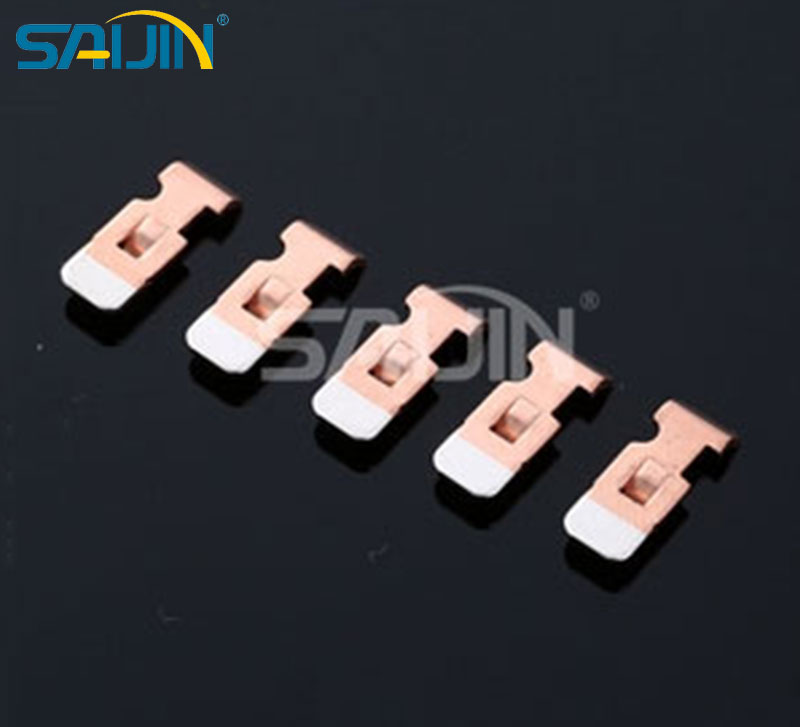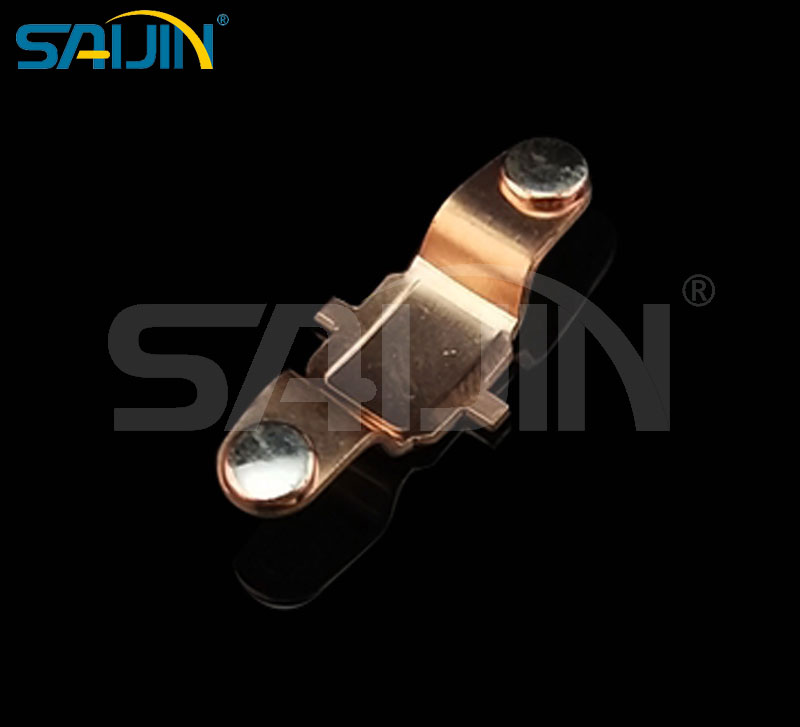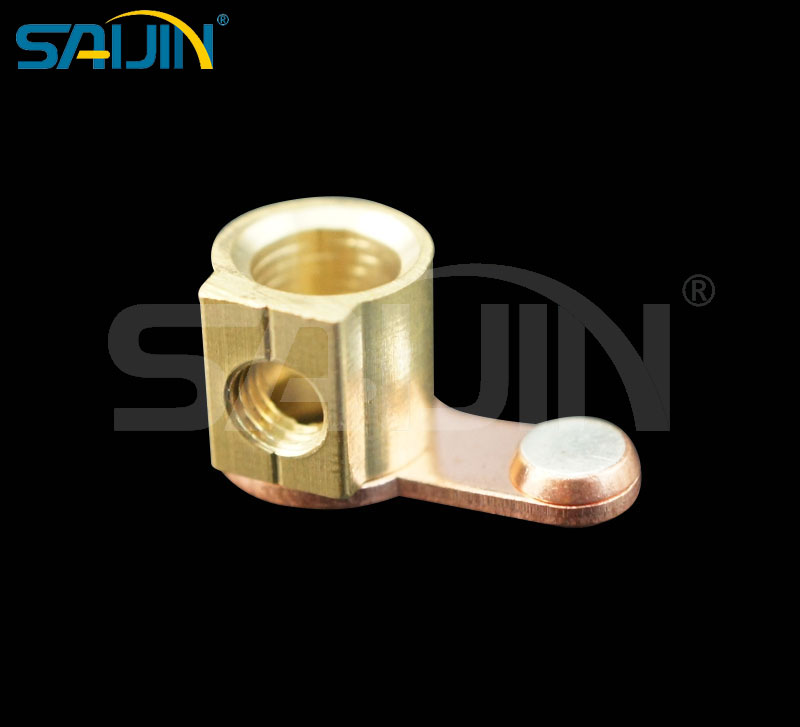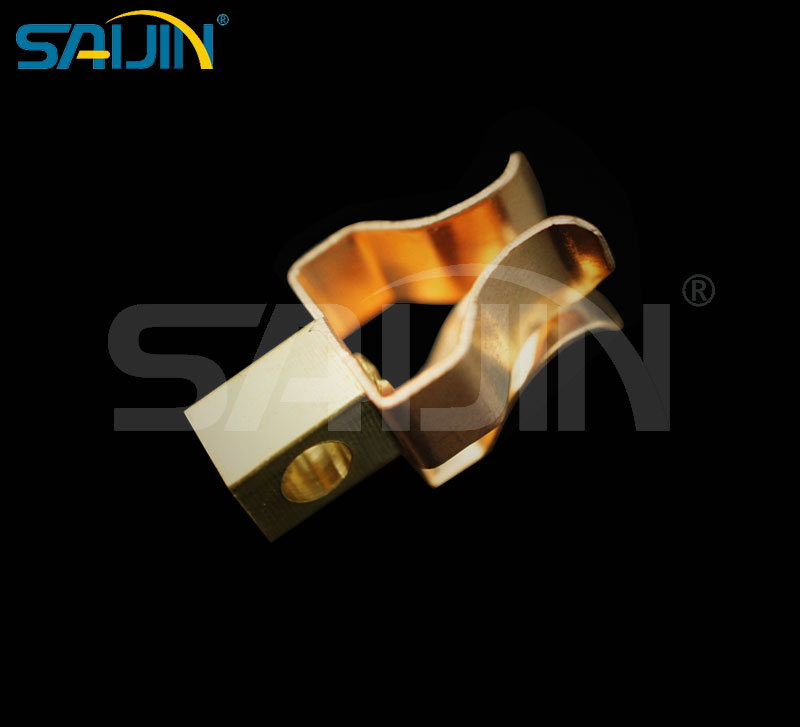Types of Silver Rivet Contact
In the intricate world of electrical engineering, reliable connections are paramount. Among the various technologies ensuring dependable current flow, Silver Rivet Contacts stand out for their durability, conductivity, and versatility. This article explores their definition, types, applications.
Definition of Silver Rivet Contact
A Silver Rivet Contact is a type of electrical contact component where a rivet (a short cylindrical pin with a head) is manufactured primarily from silver or a silver-based alloy. This rivet is mechanically fastened (usually pressed or "riveted") into a hole in a conductive base material, typically copper or a copper alloy. The key characteristics are:
Silver Material: Provides excellent electrical conductivity (the highest of any metal) and good thermal conductivity. Silver also offers superior resistance to welding and arcing compared to many other metals.
Rivet Form: The mechanical attachment provides a robust, permanent connection to the supporting base material (carrier strip, contact spring, terminal, etc.).
Composite Structure: Combines the high conductivity of silver with the mechanical strength and often lower cost of the copper/copper alloy base.
The result is a contact point designed to handle repeated electrical mating/unmating cycles, resist wear, carry significant current, and maintain a low-resistance interface over time.
What are the Types of Silver Rivet Contact?
1. Solid Rivet Contacts
Solid silver rivet contacts are made entirely from solid silver. They offer the highest level of electrical conductivity among the different types of silver rivet contacts. This makes them ideal for applications where extremely low electrical resistance is required, such as in high - current electrical systems. For example, in some industrial power distribution equipment, solid silver rivet contacts can handle large amounts of current without significant power loss due to resistance.
2. Silver - Alloy Rivet Contacts
These contacts are made from alloys of silver with other metals such as nickel, cadmium, or tin. The addition of these metals is to improve certain properties of the contact. For instance, silver - nickel alloy contacts have better wear resistance and mechanical strength compared to pure silver contacts. This makes them suitable for applications where the contact is subject to frequent making and breaking of connections, such as in relays and switches. Silver - cadmium oxide contacts, on the other hand, have good arc - quenching properties, which is important in circuits where arcing can occur during the switching process, helping to prevent damage to the contact and the surrounding components.
3. Composite Silver Rivet Contacts
Composite silver rivet contacts are made by combining silver with a different material as a base. For example, a silver layer may be bonded to a copper or brass rivet body. The advantage of this type is that it combines the excellent electrical conductivity of silver with the lower cost and better mechanical properties of the base metal. The silver layer provides the necessary electrical contact surface, while the base metal provides the structural support and reduces the overall cost. These contacts are commonly used in a wide range of consumer electronics, such as in the electrical connections of household appliances.
4. Plated Silver Rivet Contacts
Plated silver rivet contacts have a thin layer of silver plated onto a base metal rivet. The base metal can be steel, copper, or another more economical material. The silver plating provides the electrical conductivity and corrosion resistance required for the contact, while the base metal provides the mechanical strength and reduces the cost. Plated silver rivet contacts are often used in applications where the cost is a major consideration, but a certain level of electrical performance is still required, such as in some low - to medium - current electrical circuits.
Applications of Silver Rivet Contact
1. Electrical Switches and Relays
In electrical switches, silver rivet contacts are used to make and break the electrical circuit. When the switch is turned on, the contacts close, allowing the current to flow, and when turned off, they open, interrupting the current. In relays, which are used to control high - power circuits with a low - power signal, the silver rivet contacts in the relay's contactor ensure reliable connection and disconnection.
2. Electrical Connectors
Silver rivet contacts are also widely used in electrical connectors. These connectors are used to join two or more electrical components or cables. The contacts in the connector must provide a low - resistance, reliable connection. In computer and telecommunications equipment, where high - speed data transfer and reliable electrical connections are essential, silver rivet contacts in connectors help to ensure the proper transmission of signals.
3. Circuit Breakers
Circuit breakers are designed to protect electrical circuits from overcurrent. The silver rivet contacts in circuit breakers are crucial for their operation. When an overcurrent occurs, the contacts in the circuit breaker open to interrupt the current, preventing damage to the circuit and equipment. The good electrical conductivity and arc - resistance properties of silver rivet contacts make them suitable for this demanding application.
4. Industrial Equipment
In various industrial machines and equipment, such as motors, generators, and transformers, silver rivet contacts are used in the electrical connections. They help to ensure the reliable operation of these machines by providing stable electrical contacts, even in harsh industrial environments with high temperatures, vibrations, and dust.
Conclusion
Silver Rivet Contacts remain a fundamental technology for achieving reliable electrical connections in demanding environments. By understanding the different types – solid silver for ultimate performance, silver-clad for the best balance, and specialized silver alloys for enhanced properties like arc resistance and wear – engineers can select the optimal solution for relays, switches, breakers, automotive systems, and countless other applications. Their robust riveted construction ensures longevity and performance, making them a cornerstone of electrical connectivity.
FAQ about Silver Rivet Contact
Q1: Why is silver preferred for rivet contacts?
A: Silver offers the highest electrical conductivity, efficient heat dissipation, and moderate oxidation resistance—core requirements for reliable contacts. Alloys may be used to enhance performance in extreme environments.
Q2: How to select the right type?
A: Considerations:
Current/voltage: High-current needs solid/alloy contacts; low-current may use plated/composite.
Environment: Vibrant/harsh settings require durable alloys (e.g., silver-nickel).
Cost: Plated/composite for budget-friendly options; solid for premium performance.
Q3: Are they suitable for high-temperature environments?
A: Pure silver melts at 961.8°C. Silver alloys (e.g., silver-nickel) have improved thermal stability, making them suitable for moderate high-temperature applications. Always check the specific contact's temperature rating.




